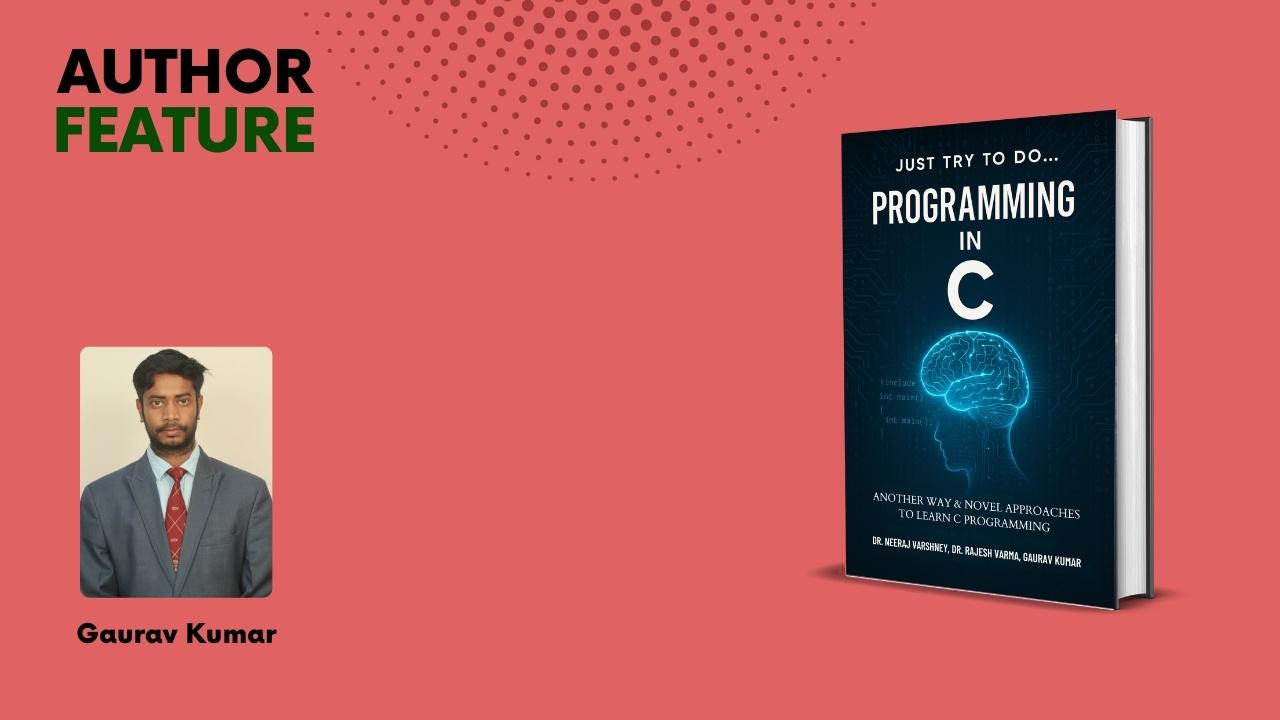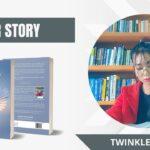
Title: Just try to do… Programming in C Language
Author: Gaurav Kumar
ISBN: 978-93-6355-507-5
Publisher: Evincepub Publishing
About the author:
Gaurav Kumar is an accomplished researcher and academician in the field of Computer Science with a strong focus on emerging technologies like machine learning, deep learning, medical image processing, and natural language processing. Heis pursuing his Ph.D. in Computer Science and Applications from GLA University, Mathura. He holds an MCA from Thapar University, Patiala, and a BCA from Magadh University, Bodh Gaya. He is a qualified UGC-NET and Bihar STET scholar and has over two years of experience in research and teaching.
Gaurav Kumar has authored more than 50+ research papers published in Scopus and IEEE-indexed international journals and conferences. His work spans a variety of cutting-edge domains including AI-based healthcare systems, cybersecurity, anomaly detection, and sentiment analysis. Gaurav is the holder of four Indian patents and one UK-granted international patent, reflecting his commitment to innovation. He is regularly invited for guest lectures, webinars, and serves as a reviewer for reputed national and international conferences. With a mission to bridge the gap between theoretical education and real-world applications, Gaurav Kumar continues to inspire students and researchers alike in the ever-evolving landscape of computer science and technology.
Q. 1 What inspired you to write Programming in C Language?
Answer: My inspiration came from my own student journey. When I first learned C, I noticed that many books either jumped too quickly into complex syntax or stayed too theoretical without practical clarity. I wanted to create a resource that bridges the gap something that explains concepts in simple terms, shows real-life applications, and encourages students to experiment with code from day one.
Q. 2 You’ve presented C in a very structured way—how did your teaching experience shape this?
Answer: Years of teaching C programming in classrooms and workshops taught me that students grasp concepts faster when the content flows logically, from fundamentals to advanced topics, without overwhelming them. I applied the same approach here starting with the basics, adding clarity with diagrams, and then moving toward problem-solving exercises.
Q. 3 Was there a specific gap in existing C programming books that you wanted to fill?
Answer: Yes. Most books either focus heavily on syntax or on theory but fail to connect the two. My book focuses on “learning by doing” every concept is paired with practical code snippets and exercises that help learners not only remember the syntax but also understand why and how it works in real scenarios.
Q. 4 What was the most challenging part of writing a comprehensive text on linguistics?
Answer: The challenge was balancing depth with simplicity. I had to ensure that a beginner could follow along without skipping core concepts, while also providing enough depth for an intermediate learner to find value. This meant constant re-reading, testing, and refining explanations
Q. 5 Did your background in academia influence the examples and exercises in the book?
Answer: Absolutely. My academic experience exposed me to the types of challenges students face, especially in understanding abstract concepts. I’ve included examples from various domains like basic algorithms, mathematical problems, and real-world applications to make the learning experience relatable.
Q. 6 How did you balance making the book useful for both beginners and intermediate learners?
Answer: The book is structured like a learning ladder. Beginners can start from the first chapter and gradually build up their skills, while intermediate learners can jump into advanced sections or focus on complex exercises. Each topic ends with self-assessment tasks to cater to both learning stages.
Q. 7 How did you ensure the explanations are beginner-friendly while keeping technical accuracy?
Answer: I used analogies, step-by-step breakdowns, and flowcharts wherever possible. I never compromised on correct terminology or programming standards. The idea was to teach concepts in plain language first, and then back them up with precise technical explanations.
Q. 8 Which chapter do you consider the most crucial for someone new to C?
Answer: The chapter on “Control Statements and Loops” is the backbone for beginners. Once students master conditional logic and loops, they can handle a wide range of programming tasks with confidence.
Q. 9 You’ve included practical examples throughout—how important is hands-on coding in learning C?
Answer: In my opinion, it’s essential. Programming is a skill you learn by doing, not just by reading. Every example in the book is designed for the reader to type, run, and modify. This active engagement builds confidence and deepens understanding.
Q. 10 How does this book help reader understand problem-solving, not just syntax?
Answer: The book teaches readers to break down problems into smaller, manageable steps before writing code. Syntax is just the tool problem-solving is the skill. By focusing on logical thinking and structured programming, the reader learns to approach any coding challenge with a clear strategy.

